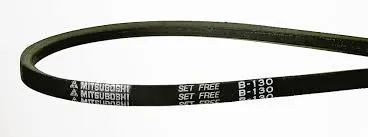- Arabic
- French
- Russian
- Spanish
- Portuguese
- Turkish
- Armenian
- English
- Albanian
- Amharic
- Azerbaijani
- Basque
- Belarusian
- Bengali
- Bosnian
- Bulgarian
- Catalan
- Cebuano
- Corsican
- Croatian
- Czech
- Danish
- Dutch
- Afrikaans
- Esperanto
- Estonian
- Finnish
- Frisian
- Galician
- Georgian
- German
- Greek
- Gujarati
- Haitian Creole
- hausa
- hawaiian
- Hebrew
- Hindi
- Miao
- Hungarian
- Icelandic
- igbo
- Indonesian
- irish
- Italian
- Japanese
- Javanese
- Kannada
- kazakh
- Khmer
- Rwandese
- Korean
- Kurdish
- Kyrgyz
- Lao
- Latin
- Latvian
- Lithuanian
- Luxembourgish
- Macedonian
- Malgashi
- Malay
- Malayalam
- Maltese
- Maori
- Marathi
- Mongolian
- Myanmar
- Nepali
- Norwegian
- Norwegian
- Occitan
- Pashto
- Persian
- Polish
- Punjabi
- Romanian
- Samoan
- Scottish Gaelic
- Serbian
- Sesotho
- Shona
- Sindhi
- Sinhala
- Slovak
- Slovenian
- Somali
- Sundanese
- Swahili
- Swedish
- Tagalog
- Tajik
- Tamil
- Tatar
- Telugu
- Thai
- Turkmen
- Ukrainian
- Urdu
- Uighur
- Uzbek
- Vietnamese
- Welsh
- Bantu
- Yiddish
- Yoruba
- Zulu
Abe . 20, 2024 17:46 Back to list
timing belt for cars
Understanding Timing Belts for Cars
The timing belt is an essential component in an automobile's engine system, serving a critical function in the synchronization of the engine's moving parts. Understanding its role, maintenance, and importance can save car owners both time and money while ensuring the vehicle runs smoothly.
What is a Timing Belt?
A timing belt is a rubber belt with teeth that connects the crankshaft to the camshaft in an internal combustion engine. Its primary function is to keep these two engine components in sync as they rotate. This synchronization is crucial because it ensures that the engine's valves open and close at the appropriate times during the combustion cycle. When the timing belt is well-maintained, the engine operates efficiently, providing better performance and fuel economy.
Importance of the Timing Belt
The timing belt plays a vital role in the overall operation of the engine. If it fails, the consequences can be severe, leading to significant engine damage. Unlike a timing chain, which can often last a vehicle's lifetime, timing belts generally require replacement at regular intervals—typically every 60,000 to 100,000 miles, depending on the manufacturer's recommendations. Ignoring this maintenance can lead to catastrophic engine failure, often requiring an expensive rebuild or replacement.
Symptoms of a Failing Timing Belt
As the timing belt ages, it can develop symptoms that indicate it needs replacement. Common signs include
1. Engine Misfiring If the timing belt has stretched or has lost teeth, it may cause the engine's timing to go off, leading to misfires. 2. Unusual Engine Noises If you hear a ticking or slapping sound coming from the engine, it could be a sign of a loose or worn timing belt.
3. Oil Leaks A timing belt that is deteriorating can cause oil seals to fail, leading to leaks.
timing belt for cars

5. Difficulty Starting An older or failing timing belt can lead to problems when starting the engine.
Maintenance Tips
To avoid a timing belt failure, car owners should adhere to regular maintenance recommendations. Here are a few tips
1. Follow the Manufacturer’s Guidelines Always refer to the owner's manual for recommended timing belt replacement intervals.
2. Regular Inspections During routine maintenance checks, have a mechanic inspect the timing belt for signs of wear, such as cracks or fraying.
3. Listen for Unusual Noises Be attentive to your engine's sounds. If something feels off, don’t ignore it.
4. Pay Attention to Performance Notice any changes in performance, such as decreased power or changes in fuel economy, as these could indicate a timing belt issue.
5. Replace Alongside Other Components When replacing the timing belt, it's often advisable to change other related components, like the water pump, tensioners, and idler pulleys, to ensure everything runs smoothly.
Conclusion
The timing belt is a crucial yet often overlooked component of a car's engine. Its role in ensuring the proper timing of engine operations cannot be understated. Regular maintenance and timely replacement can save car owners from costly repairs and keep their vehicles performing at peak efficiency. Taking simple proactive measures can ensure that your timing belt serves its purpose effectively, providing peace of mind and a smoother driving experience.
-
Korean Auto Parts Timing Belt 24312-37500 For Hyundai/Kia
NewsMar.07,2025
-
7PK2300 90916-T2024 RIBBED BELT POLY V BELT PK BELT
NewsMar.07,2025
-
Chinese Auto Belt Factory 310-2M-22 For BMW/Mercedes-Benz
NewsMar.07,2025
-
Chinese Auto Belt Factory 310-2M-22 For BMW/Mercedes-Benz
NewsMar.07,2025
-
90916-02660 PK Belt 6PK1680 For Toyota
NewsMar.07,2025
-
drive belt serpentine belt
NewsMar.07,2025

